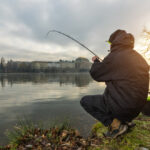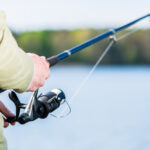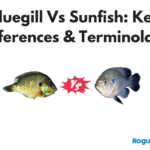What is the difference between Steelhead and Rainbow Trout? Although they may look and act differently, they’re actually both the same species – Oncorhynchus mykiss.
The differences between them come from their lifestyles, with Steelheads spending most of their lives in the ocean – returning to freshwater only to spawn.
Rainbow trout live entirely in freshwater environments. These habitat differences lead to differences in their size, coloration, strength and more.
In this article, we’ll outline the differences and give you a comprehensive guide on how to tell these two fish apart, as well as the basics of fishing them. We look at:
- Telling the species apart
- Differences in habitat and taste
- Techniques for fishing rainbow trout
- Techniques for fishing steelhead trout
- Frequently asked questions.
Let’s dive in!
How to Differentiate a Rainbow Trout from a Steelhead?
| Attribute | Steelhead | Rainbow Trout |
| Species | Oncorhynchus mykiss | Oncorhynchus mykiss |
| Size | 10 to 13 pounds | About 8 pounds |
| Body Coloration | Silvery, metallic hue | Rainbow-hued colors with blue, green, yellow, and pink stripe |
| Habitat | Ocean (estuaries, open ocean) | Freshwater (streams, lakes, rivers) |
| Diet | Marine fish, saltwater organisms, insects, zooplankton | Fish eggs, small fish, mollusks, crustaceans, insects |
| Taste | Similar to salmon, but milder | Mild, nutty flavor |
| Fishing Gear | Medium to heavy | Lightweight |
| Hook and Bait Size | Large | Small |
| Casting Location | Deeper pools and runs | Near the shore, areas with structures |
| Fighting Style | Strong fights and runs | Aggressive |
Differentiating between Rainbow Trout and Steelhead is easier than you may think. In this section, we break down some of the most common ways to tell them apart:
Size
Rainbow Trout tend to be smaller than Steelhead. On average, your typical rainbow trout weighs in at about 8 pounds, although they can reach greater sizes.
In comparison, Steelhead are typically larger. This is due to their oceanic phase. They usually weigh in between 10 and 13 pounds, depending on their age.
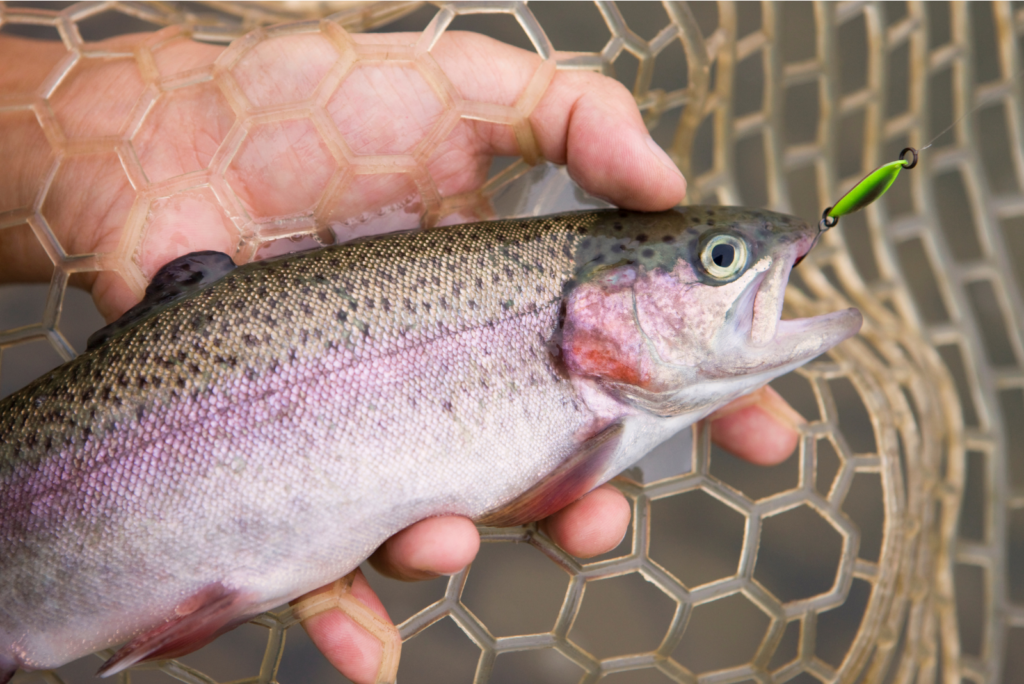
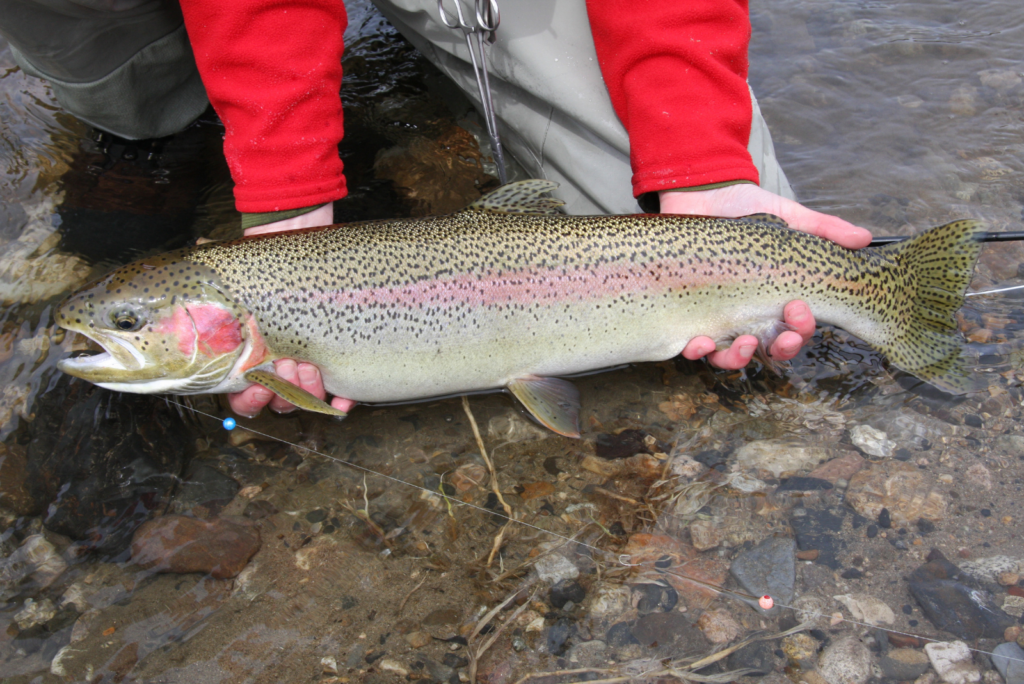
Body Coloration
With both these fish, their coloration is reflected in their names!
Rainbow trout are known for their rainbow-hued colors, with blue, green, and yellow shading on the bodies and a pinkish-red stripe that runs from the gills to the tail. They also frequently have black spots on their backs.
Steelhead, on the other hand, tend to be more uniform in color and have a silvery, metallic hue – hence their name.
Habitat
Rainbow trout live entirely in freshwater. They’re typically found in streams, lakes, or rivers and are often seen hiding behind aquatic vegetation, boulders, or wood.
Conversely, Steelhead are anadromous fish. This means they spend most of their lives in the ocean, only returning to the freshwater to spawn. The majority of their lives are in estuaries or even the open ocean.
Diet
Rainbow trout have a varied diet, which consists of fish eggs, small fish, mollusks, crustaceans, and insects. In some instances, their diet may even include mice!
Steelhead eat a similarly varied diet that includes insects and zooplankton, but while in the ocean their diet consists of marine fish and other saltwater organisms. As they get larger, their diet consists of larger fish.
Taste
Thanks to their anadromous lifestyle, Steelhead has a similar flavor to salmon (though milder). Some describe the flavor as a cross between the flavors of Salmon and trout.
In comparison, Rainbow Trout has a mild, very delicate flavor that is sometimes described as ‘nutty’.
How To Fish Rainbow Trout
Planning and learning correct techniques will help to increase your chances of successfully catching a rainbow trout.
Use Lightweight Fishing Gear
Due to the size and fighting style of Rainbow Trout, using lightweight gear is essential.
Use a light or ultralight spinning rod and reel in order to get the best results. A 4-6 pound test line is the best choice.
Use Small Hooks And Bait
Because rainbow trout have small mouths – especially compared to other game fish – smaller hooks and baits are the most effective. Natural baits such as worms or salmon eggs are good, but small-sized artificial baits can also work well.
Cast Near The Shore Or In Areas With Structures
Rainbow Trout prefer areas with cover, like logs, boulders, or vegetation. These areas also attract the insects or small fish that are the trout’s preferred food. If you cast in these areas, you’ll vastly improve your chances of getting a bite.
Be Patient And Wait For Bites
Patience is essential when fishing for Rainbow Trout. Sit back and enjoy your surroundings; it may take some time for the fish to bite!
Use A Slow And Steady Retrieve When Using Lures
If you’re using lures, a slow and steady retrieval is the most effective.
This is because this action mimics the motion of the natural prey of the rainbow trout. A steady retrieve also helps give the trout more time to spot and follow your lure.
Set The Hook Firmly When You Feel A Bite
The moment you feel a tug on your line from a rainbow trout, set the hook firmly! Pull the rod tip up to drive the hook firmly into the trout’s mouth.
Despite their smaller size, Rainbow trout can be aggressive and may fight back, so ensure you have a firm grip on your rod.
Keep The Trout In The Water When Handling For Catch And Release
If you’re doing catch-and-release fishing, it’s essential to keep the fish in the water as much as you can when handling.
Trout are delicate fish and it’s easy to accidentally harm or overly stress them. Always use wet hands or water-friendly gloves when handling Rainbow Trout in order to avoid damage to the fish.
If you have to lift the fish from the water, make sure it’s as brief as possible.
How to Fish Steelhead Trout
There are some clear differences when it comes to fishing for Steelhead as compared to Rainbow Trout, largely related to the bigger body size and increased strength of the Steelhead Trout.
Use Medium To Heavy Fishing Gear
Using medium to heavy fishing gear is essential when fishing for Steelhead – you can’t use the same gear you’d use to land a Rainbow Trout. Heavier equipment will ensure your gear won’t break, and will also let you land the fish more easily.
Use Large Hooks And Bait
Steelhead tend to be large, aggressive fish, and using larger hooks helps to lower the chance of the fish freeing themselves. Types of bait to use are larger chunks of roe, nightcrawlers, or larger-sized artificial baits.
Cast In Deeper Pools And Runs
Steelhead trout often hang out in deeper pools and deeper parts of the river, particularly during the hottest part of the day.
If you cast into deeper areas, you increase your chances of a Steelhead seeing your bait or lure. They are also most often found in areas with swift running water, so ensure you check this before casting your line.
Keep A Tight Line And Feel For Subtle Bites
Bites from a Steelhead can be subtle and easily missed, particularly if you haven’t fished for Steelhead before. The bites can feel more like light taps on the line, so maintaining a tight line is essential to detect the bites.
Use A Steady And Slow Retrieve When Using Lures
Steelhead share this characteristic with Rainbow Trout; therefore, a slow and steady approach is best if you’re using lures. As with rainbow trout, this motion is closest to the natural movement of their prey.
Set The Hook Firmly When You Feel A Strike
Steelhead have hard mouths, so setting the hook firmly is crucial. When you feel a bite, quickly and sharply pull up the tip of the rod to ensure the hook is firmly lodged.
Be Prepared For Strong Fights And Runs
Steelheads are strong fighters and frequently make powerful runs after being hooked.
Patience is essential; you want to give the fish some line and wait for it to tire. Trying to force the fish to your net too early will increase your chances of losing the fish.
Use A Landing Net For Larger Fish
Because of their large size, a landing net is an essential tool when fishing for Steelhead.
Landing a Steelhead by hand increases the chance of losing the fish or injuring it if you’re doing catch-and-release.
If you are planning to release, make sure the net is wet so you don’t damage the fish’s scales or slime coat.
Some Open Questions
Why Are Rainbow Trout Called Steelhead?
Although both fish are the species Oncorhynchus mykiss, when a Rainbow Trout migrates to the ocean – only returning to freshwater to spawn – they become known as Steelhead.
This is because their coloration becomes metallic from living in the salty ocean environment.
Do Steelhead Die After Spawning?
Steelhead do not die after spawning; instead, they have the ability to spawn many times throughout their lives. They are iteroparous, as opposed to semelparous fish like Atlantic Salmon which die after a single spawning season.
How Does Steelhead Thrive In The Sea?
Steelhead are anadromous, which means that they can live in both freshwater and saltwater.
When they move to the ocean, they undergo ‘smoltification’ which allows them to tolerate saltwater. Changes occur to their kidneys and gills which allows them to process the higher salt content of the water.
Why are Steelhead Bigger Than Rainbow Trout?
Steelhead are usually bigger than Rainbow Trout because food is more abundant in the ocean.
Rainbow trout usually live in small ponds, creeks, or rivers, where food is far more scarce.
As fish keep growing throughout their life spans, this means that Steelhead have the capacity to grow much larger than Rainbow Trout.
Sources
https://www.nwf.org/Educational-Resources/Wildlife-Guide/Fish/Rainbow-Trout-Steelhead.
https://idfg.idaho.gov/fish/steelhead/profile
https://flylordsmag.com/the-difference-between-steelhead-rainbow-trout/
https://andrewsforest.oregonstate.edu/sites/default/files/lter/pubs/pdf/pub3084.pdf
https://fishtalkmag.com/blog/fishing-beginners-rainbow-trout
https://troutandsteelhead.net/steelhead-fishing/
https://fishncanada.com/are-steelhead-and-a-rainbow-trout-the-same-fish).
https://www.nwf.org/Educational-Resources/Wildlife-Guide/Fish/Rainbow-Trout-Steelhead.
https://www.sciencedirect.com/topics/agricultural-and-biological-sciences/smoltification
